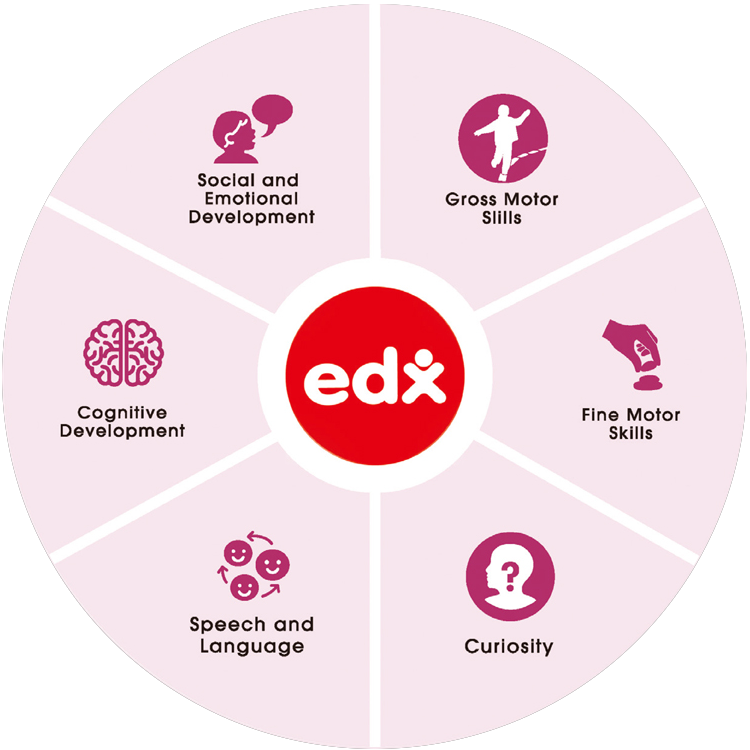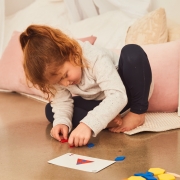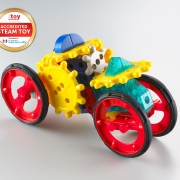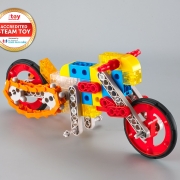Learning Through Play, what really matters in toys
Author, Heather Welch, Edx Education
“Learning through play”
It has become one of the most controversial subjects around the world among educational researchers, academics and parents.
- Have you ever stopped to watch how children interact/engage with their toys?
- Which toys do they enjoy playing with most?
- Which ones last the longest?
- Which ones are always recycled through friends?
- Which ones are “for boys/girls/gender-neutral?
The world is ever evolving, the education systems worldwide are adapting turning young individuals into world-ready leaders. Many curriculums looking at creativity, concept learning, and hands on, “learning through play”.
Early Childhood News is an excellent resource for parents and teachers alike.
It classifies play as:
The natural activity of early childhood, play, is what children do and it is their way of life. For young children, there is no distinction between play and learning; they are one and the same. Playing is a priority in early childhood, yet not all play is the same. Most experts agree that children’s play can be divided into these categories:
- Active play: running, jumping, climbing, riding, and other use of large muscles.
- Quiet play: reading, stringing, coloring, etc.
- Cooperative or social play: games and activities that involve more than one.
- Solitary play: drawing, dreaming, or any activity that involves only one.
- Manipulative play: putting together puzzles, building with blocks, cutting and pasting, or any activity that involves eye-hand coordination or fine motor skills.
- Creative play: painting, moulding, solving problems, making music, telling stories, or any activity that involves a child’s imagination.
- Dramatic play: dress-up, make-believe, or any play that involves pretending.
As teachers, we are there to facilitate across many different mediums, as required by the curriculum and the learning objectives.
As parents, we compliment learning at home by interacting with our children, developing their; resilience, language and coordination utilising learning experiences with educational toys to facilitate the many forms of play, Manipulative, Quiet, Creative, Dramatic, Cooperative or social and Active.
As parents and teachers, we provide the knowledge facilitated with experience, we can also provide interactions at home. With educational based toys it allows children to develop the depth of knowledge they have created through experience.
When you see children playing with blocks, or construction toys, then think ‘how did they come up with that design’ (Manipulative play) or imagine they will be architects or engineer when they are older.
If a child is designing a tower, using cars to build a city, the first thing they do is to decide on colors, shapes, length and how many? All are early years foundation skills like fine motors skills, balance, coordination needed in order to build with the construction tools. Rainbow Pebbles are great for learning by play (see linked article) , teaching basic mathematical and design concepts. (Creative, Solitary, Cooperative, Dramatic, Manipulative play)
The difference in education toys vs licensed figurines are educational toys children are developing their foundation skills from fine motor skills, cognitive development to design thinking, problem solving & critical thinking.
However many licensed toy companies are moving towards this trend. It is clear there is a greater understanding of what parents, children and teachers expect from toys. More purpose and learning experiences for their children looking at creativity, problem solving and imagination.
So let’s enhance our children’s learning at home evaluate the purpose of your children’s toys and experiences.

 Edx Education
Edx Education


 Edx Education
Edx Education 
 Edx Education
Edx Education  Edx Education
Edx Education Edx Education
Edx Education